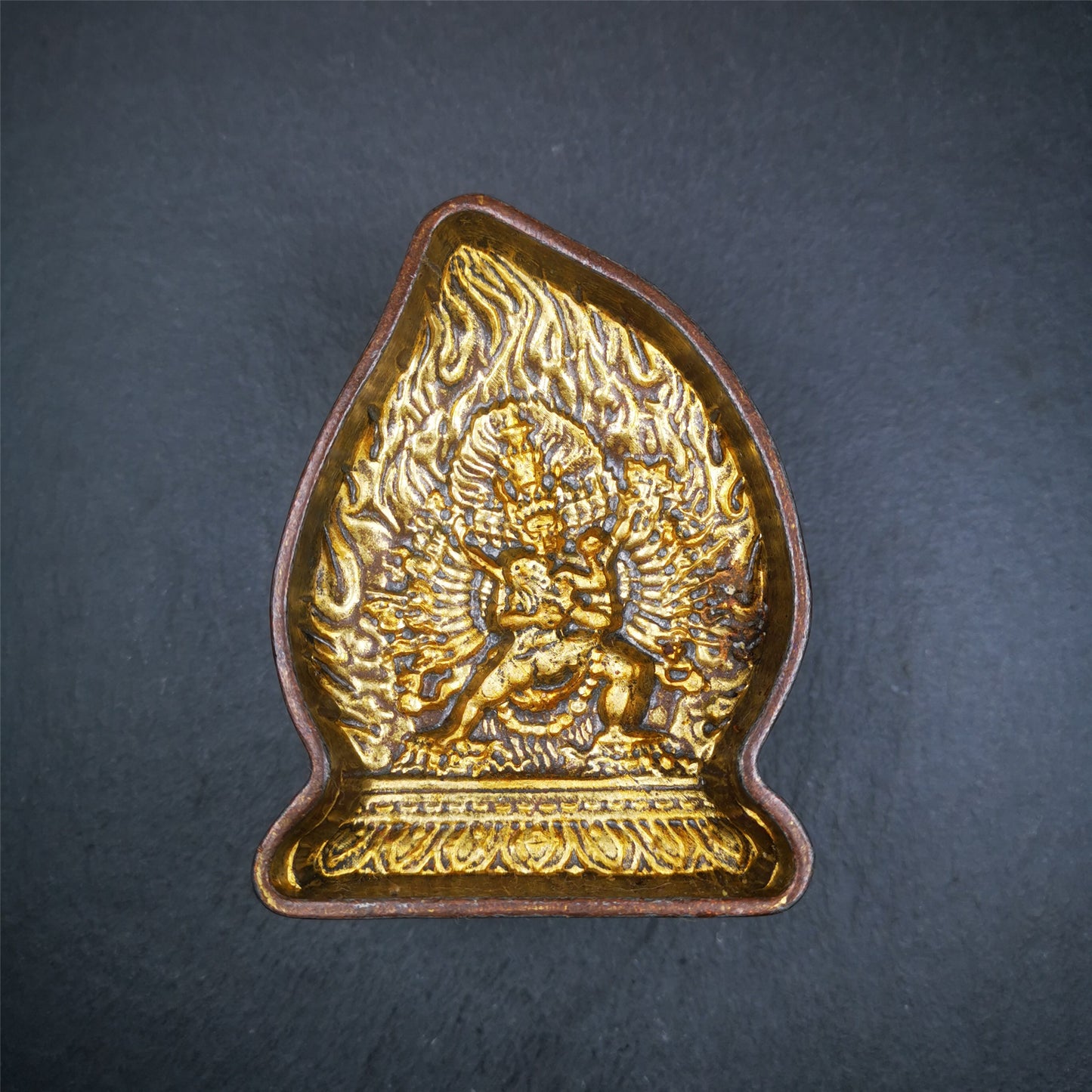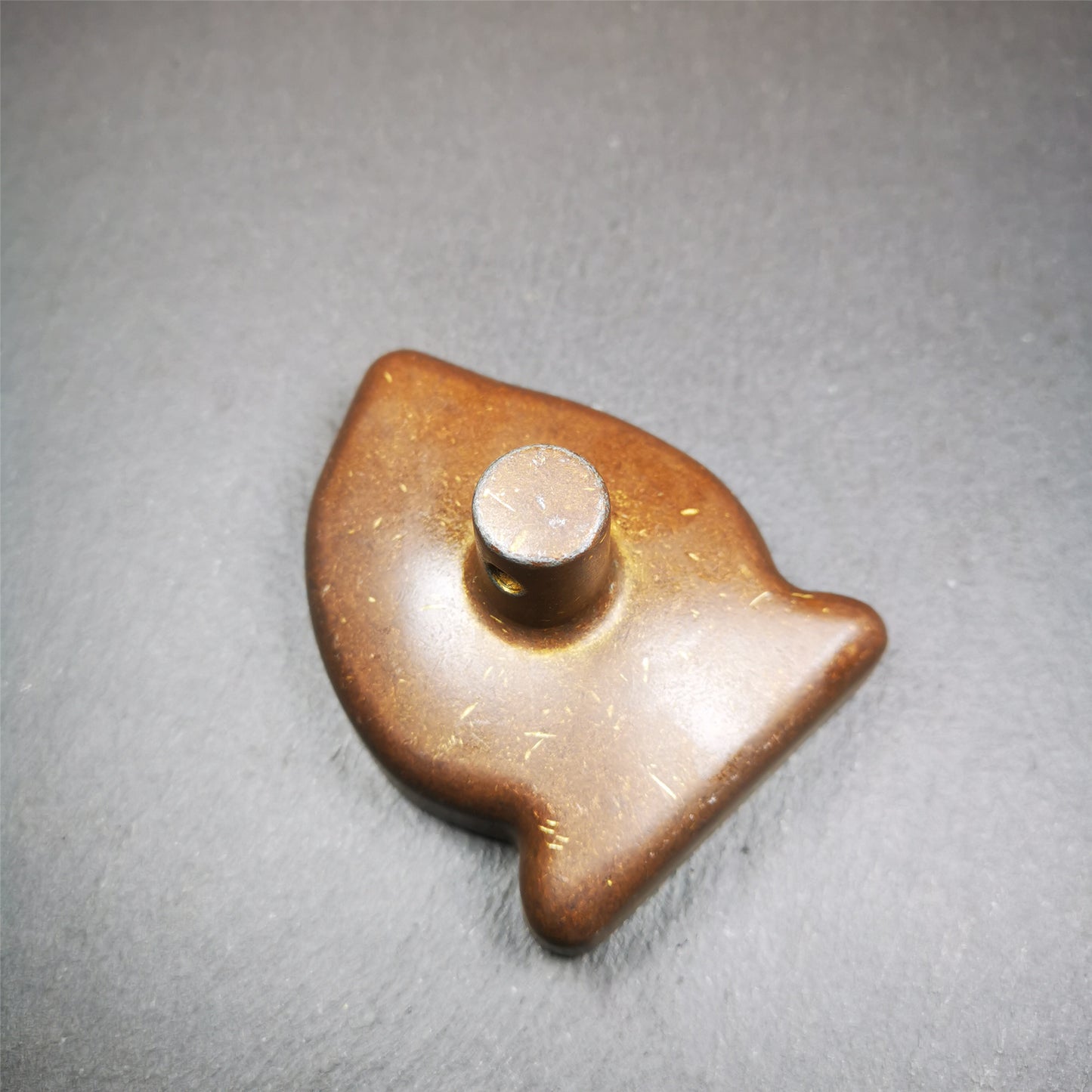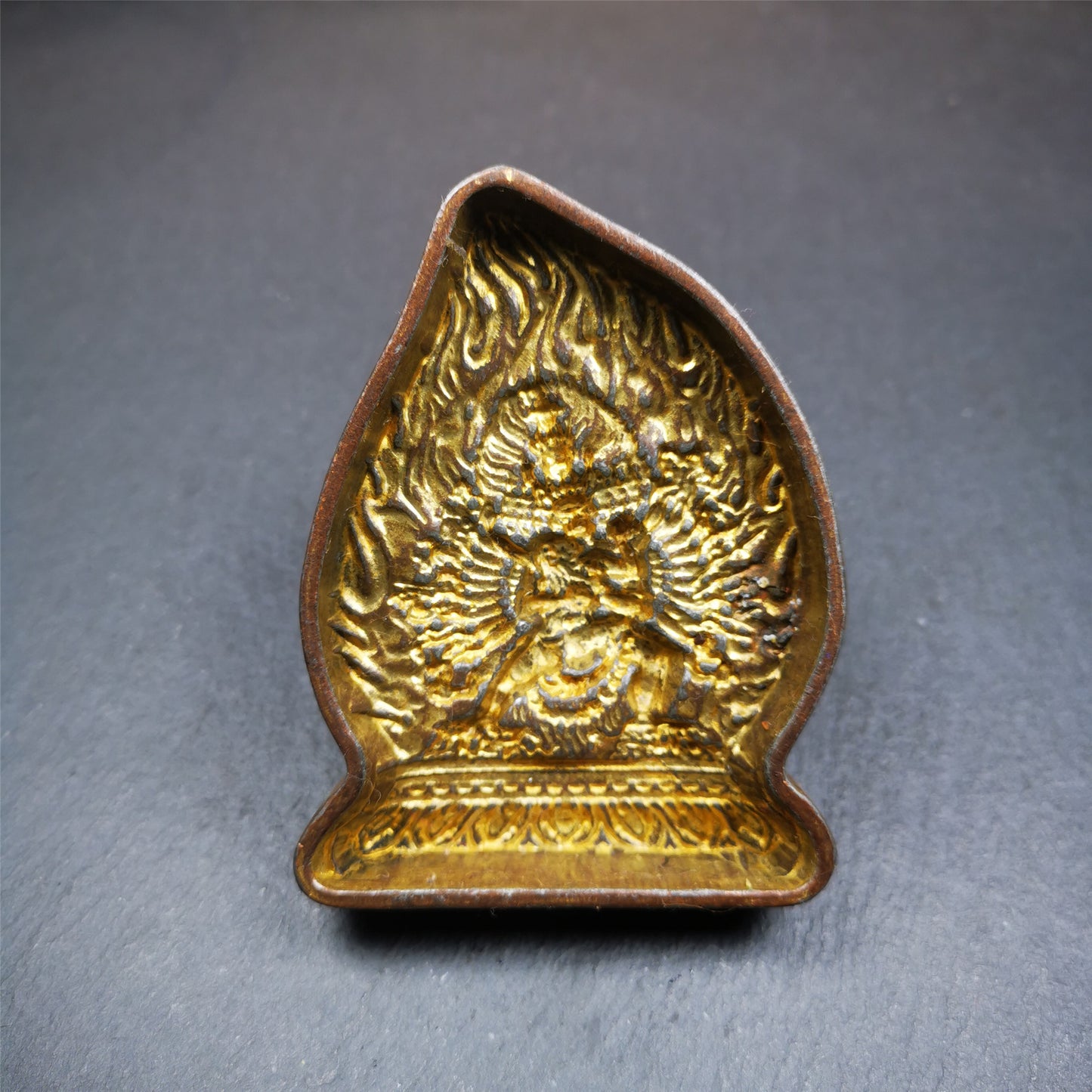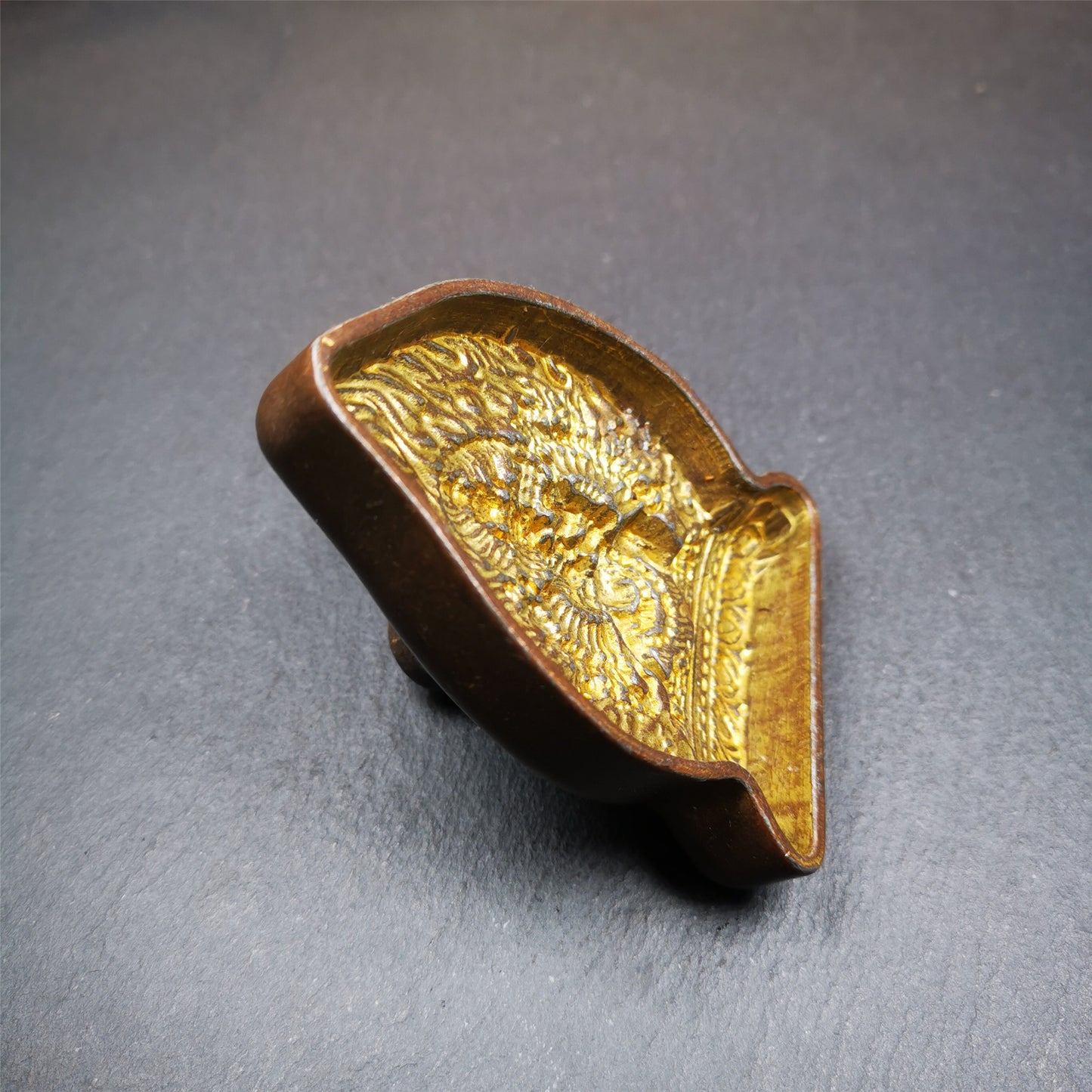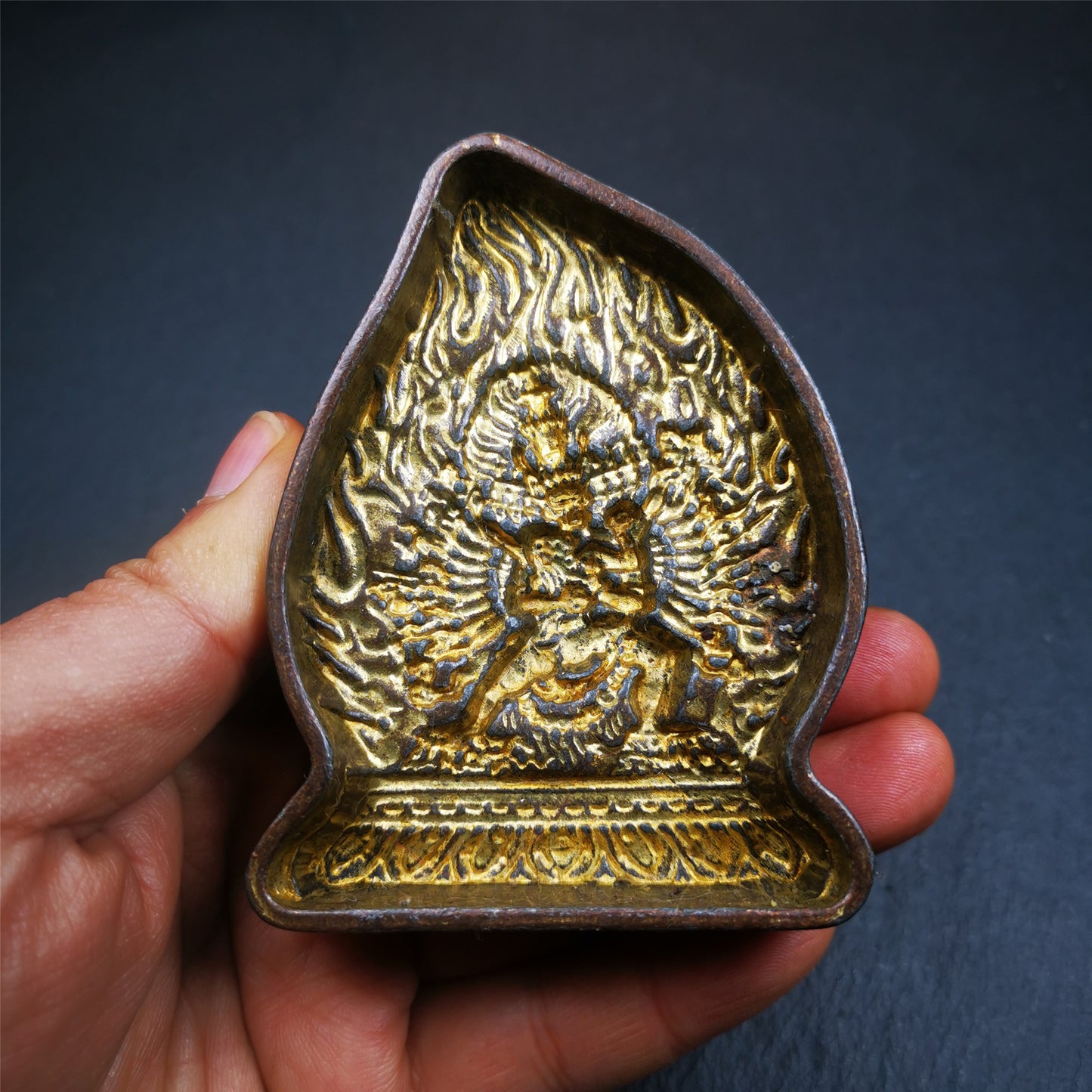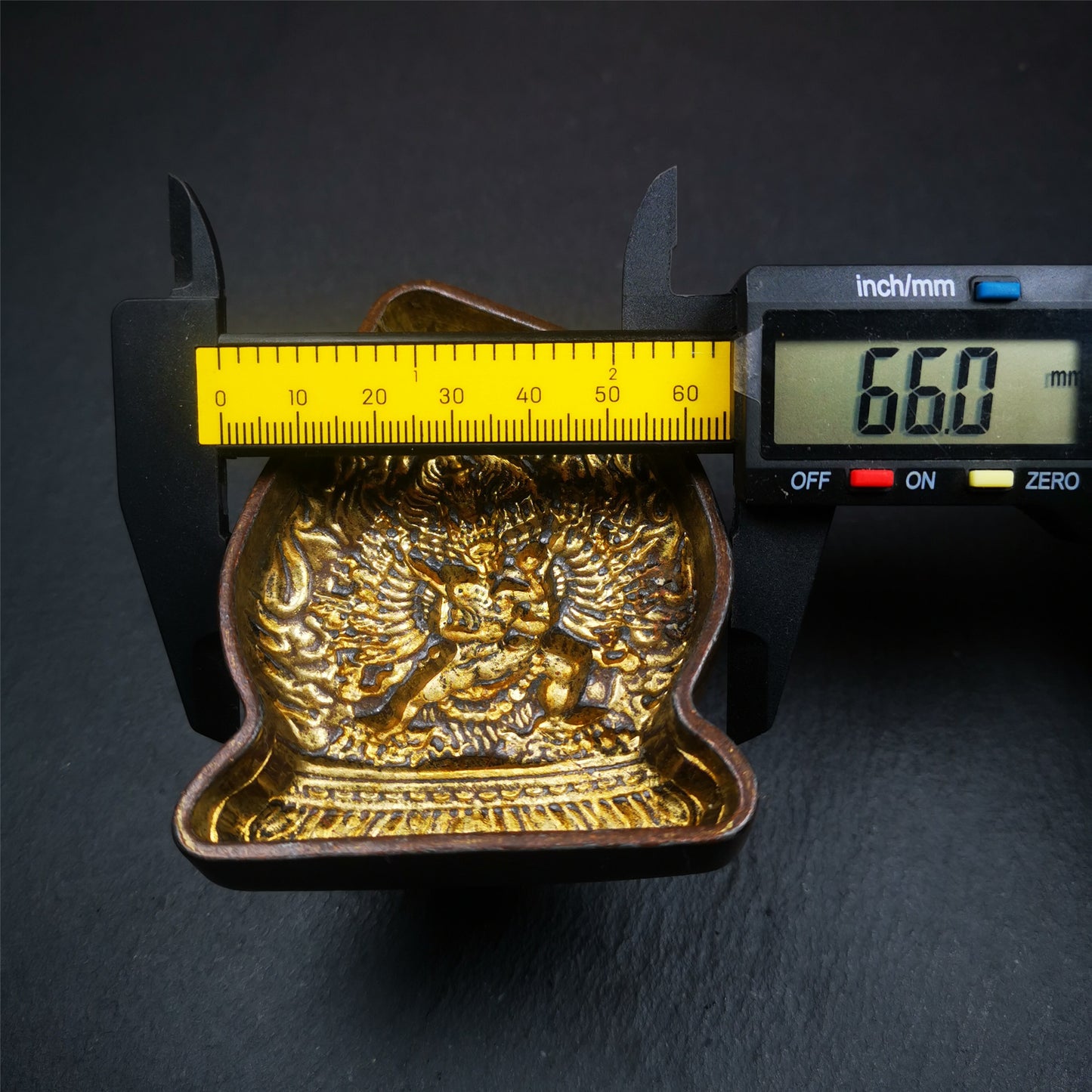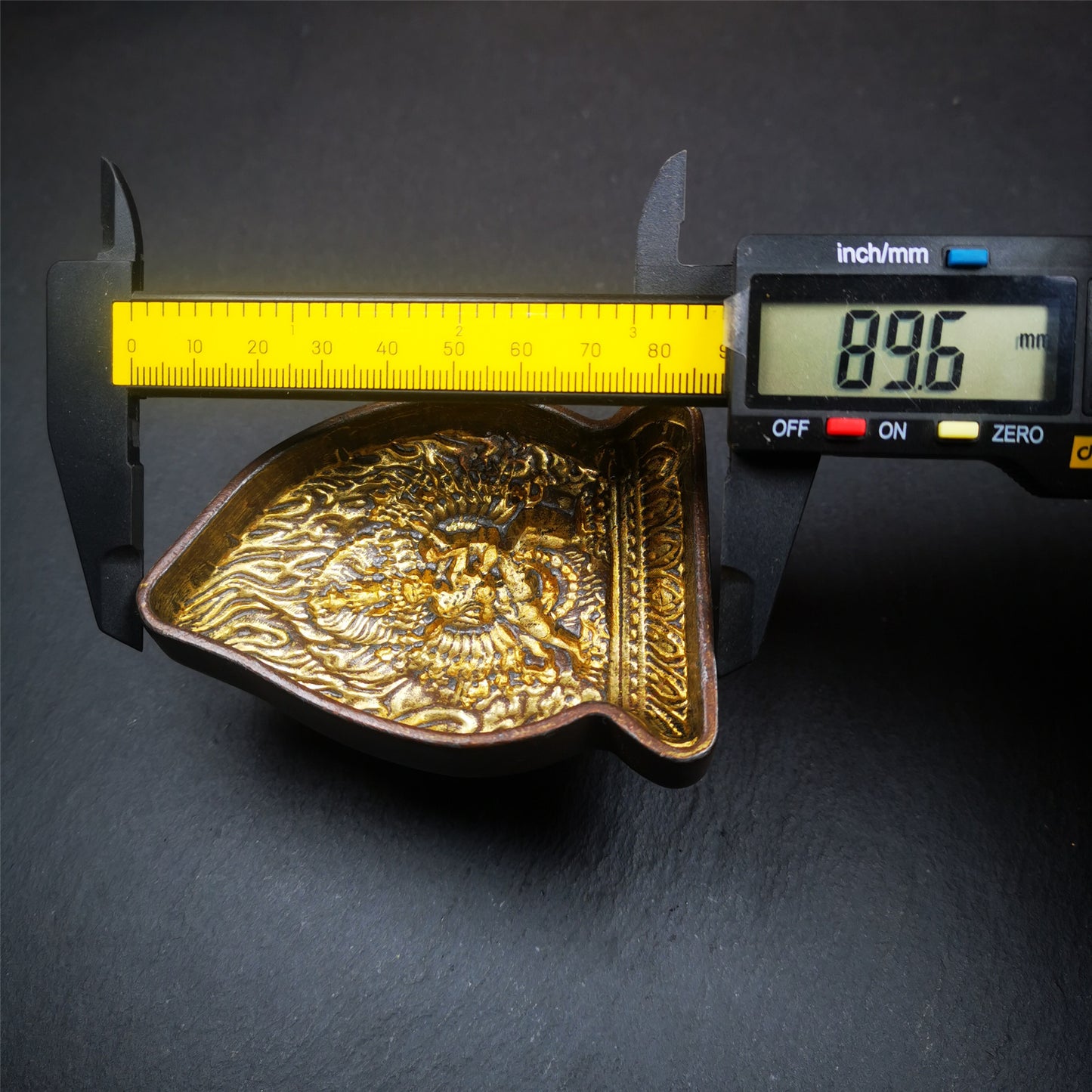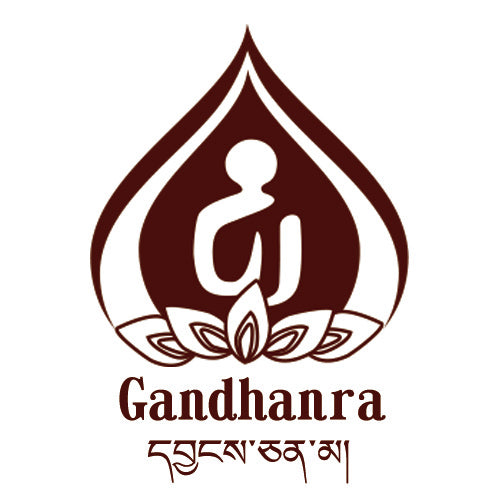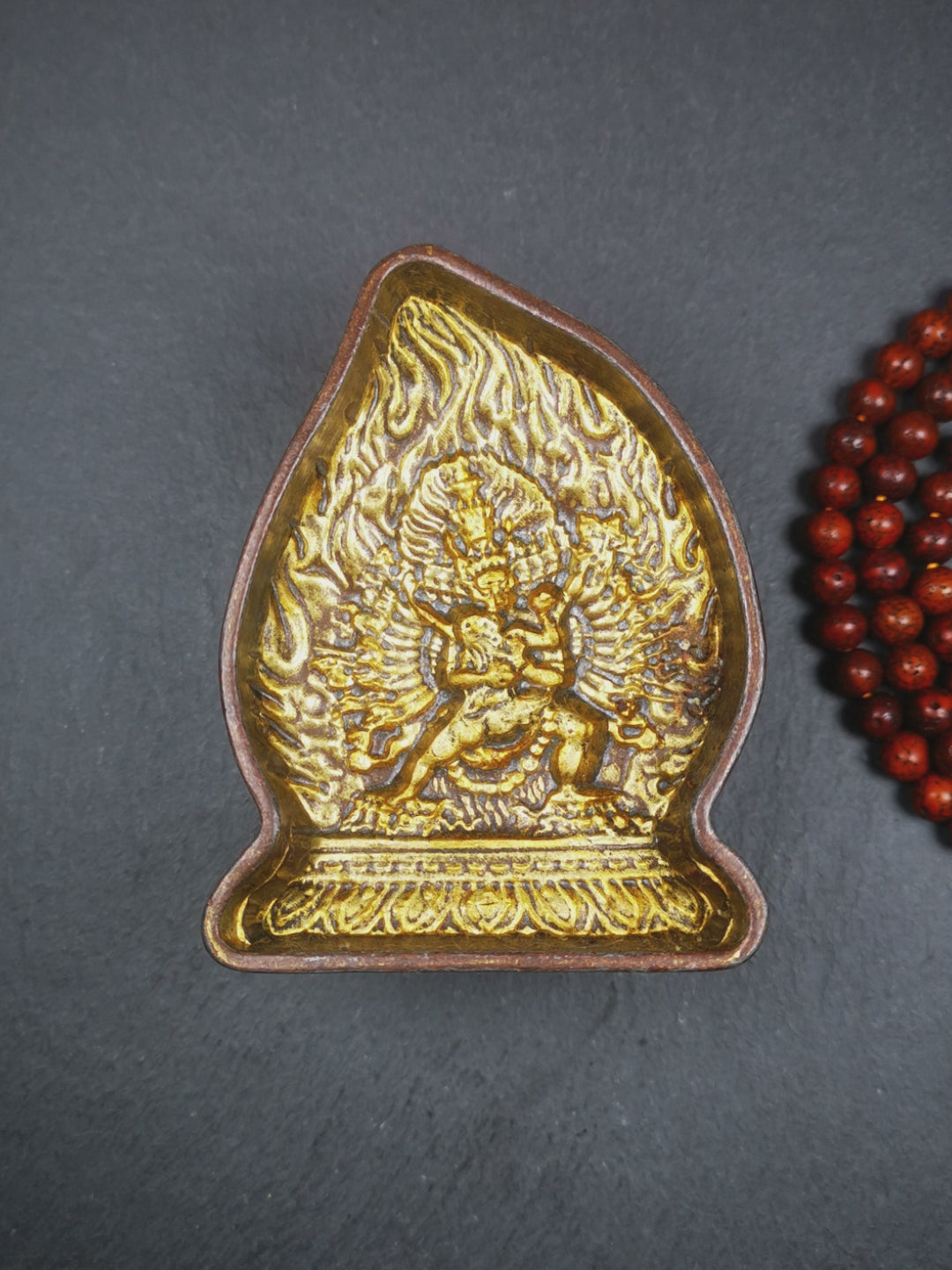Kalacakra Tsa Tsa Mold
Kalacakra Tsa Tsa Mold
⏱Vintage: 1990s
☞Handmade: 100%
⚒Materials: Copper
☲Size: 3.54" × 2.6"
Couldn't load pickup availability
❤This unique Kalacakra Tsa-Tsa Tibetan buddha statue mold is made by Tibetan craftsmen in Hepo Township, Baiyu County.
With this exquisite mold, you can use clay to make your own Buddha statue as a decoration or consecration.
The statue that you make from your moulds can be painted.
You can learn how to make your statue with this video.
❤ SPECIFICATIONS
Material: copper
Craft: Manual mold, pouring
Color:brown
Size:
Height:about 90mm / 3.54 inches
Width :about 66mm / 2.6 inches
Thickness:about 47mm / 1.8 inches
❤HOW TO USE
1. Oil the mold to prevent the clay from sticking
2. Place the mold on the prepared clay
3. Press or hammer the mold hard to shape the clay and take out the blank
4. Dry the blank naturally, let it dry completely
5. (Optional) Bake it in the oven to enhance its hardness, just like pottery
6. (Optional) You can even paint it yourself.
❤You'll get 1pc Buddha statue mold as pictures shown.
❤ABOUT TSA TSA
Tsa Tsa (Tibetan: ཚ་ཚ་, Willy: tsha tsha; Sanskrit: satchāya; Pali: sacchāya or sacchāha), a small mold-releasing clay sculpture in Tibetan Buddhism.
Tsa Tsa originated from India and was introduced to Tibet in the seventh century. It is extruded through a metal mold, and the cement is mixed with wheat grains, treasure powder, spices or the ashes of the monk. The patterns on it were mainly in Indian style in the early days, such as the Sky Tower, Gate Tower, Bodhi Pagoda, and the mantras of the Prajna Paramita Heart Sutra. Later, Tibet began to make its own molds, and the patterns of gods and Buddha images and the six-character mantra began to replace the earlier Indian style.
Tsa Tsa is generally placed in the pagoda as a stupa, or placed in a special "Tsa Tsa kang", or enshrined in temple halls, mani piles, monks' cultivation caves and other places.
❤ABOUT Kalacakra
Kalacakra (Tibetan: དུས་ཀྱི་འཁོར་ལོ།, Wylie: dus kyi 'khor lo) is a polysemic term in Vajrayana Buddhism as well as Hinduism that means "wheel of time" or "time cycles". "Kalacakra" is also the name of a series of Buddhist texts and a major practice lineage in Indian Buddhism and Tibetan Buddhism.The tantra is considered to belong to the unexcelled yoga (anuttara-yoga) class.
Kalacakra also refers both to a patron tantric deity or yidam in Vajrayana and to the philosophies and yogas of the Kalacakra tradition. The tradition's origins are in India and its most active later history and presence has been in Tibet.The tradition contains teachings on cosmology, theology, philosophy, sociology, soteriology, myth, prophecy, medicine and yoga. It depicts a mythic reality whereby cosmic and socio-historical events correspond to processes in the bodies of individuals. These teachings are meant to lead to a transformation of one's body and mind into perfect Buddhahood through various yogic methods.
The Kalacakra tradition is based on Mahayana Buddhist non-dualism, which is strongly influenced by Madhyamaka philosophy, but also draws on a wide range of Buddhist and non-Buddhist (mainly Hindu) traditions (such as Vaibhasika, Kashmir Shaivism, Vaishnavism, and Samkhya). The Kalacakra tradition holds that Kalacakra teachings were taught in India by Gautama Buddha himself. According to modern Buddhist studies, the original Sanskrit texts of the Kalacakra tradition "originated during the early decades of the 11th century CE, and we know with certainty that the Sri Kalacakra and the Vimalaprabha commentary were completed between 1025 and 1040 CE."Kalacakra remains an active tradition of Buddhist tantra in Tibetan Buddhism, particularly within the Jonang tradition, and its teachings and initiations have been offered to large public audiences, most famously by the 14th Dalai Lama, Tenzin Gyatso.

